Bleriot XI
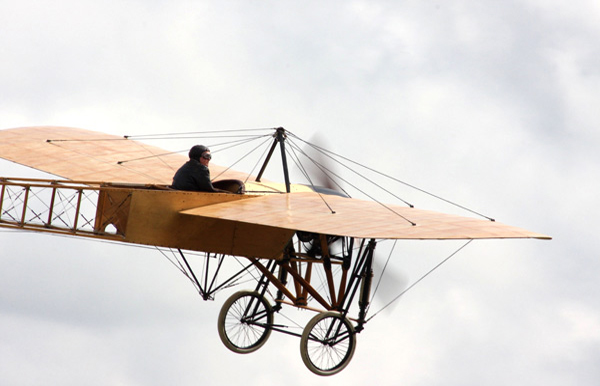
Bleriot XI EAA-1184-SE SE-AMZ, license-built in Sweden as Thulin A. Photo by Bob Franklin
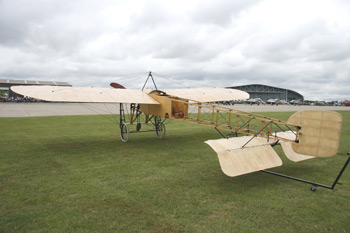
Bleriot XI EAA-1184-SE SE-AMZ
Photo Bob Franklin
The Bleriot XI designed by Louis Bleriot and Raymond Saulnier (Morane-Saulnier). The aircraft was a light and sleek monoplane made of oak and poplar with the flying surfaces being covered with cloth. The original XI was designed and constructed in 1908 and made its public debut at a Paris air show in December 1908.
The Bleriot XI originally had a R.E.P engine complete with a metal four-blade paddle type propeller. The R.E.P engine was not as successful as first thought. During the Spring of 1909 Louis Bleriot replaced it with a 25 horsepower Anzani 3 cylinder engine and also replaced the original propeller with a two-blade wooden Chauviere propeller. This had a much better result than the first set-up. The Anzani engine could run for at least an hour continuously.
Other parts of the aircraft were considered to be groundbreaking technology at the time, including the castering landing gear (which would allow for crosswind landings) and wind warping, which was used instead of ailerons. Inadvertently by leaving the aft section of the fuselage uncovered Bleriot actually added lateral stability to the aircraft.
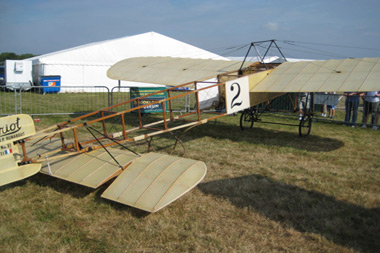
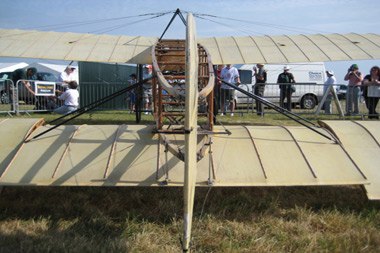
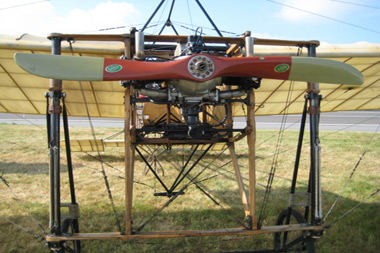
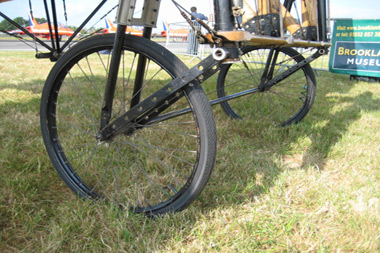
Images courtesy of Chris Cannon
The Channel Crossing
On 25th July 1909 the Bleriot XI was immortalised when Louis Bleriot successfully managed to cross the English Channel in a race from Calais to Dover in 36.5 minutes. Bleriot and his opponents Hubert Latham and Count de Lambert could not fly for several days due to bad weather conditions.
Hubert Latham flew an Antoinette monoplane and Count de Lambert a Wright Biplane.
The morning of the race when Bleriot woke, it is said that Latham had overslept. During the race Bleriot encountered bad weather including fog and did not even have a compass to guide him across the Channel. The Anzani engine managed to survive the race whole due to the fact that the rain had cooled the engine. As Bleriot approached the English coast he could see a French reporter waving the French flag, this marked his landing spot. The landing gear collapsed due to a pancake landing by Bleriot, but he still walked away with the £1000 prize money which was awarded by the London Daily Mail.
The original Bleriot XI that Louis Bleriot crossed the Channel in 1909 in is displayed at Musee des Arts et Metiers, Paris.
The aircraft became very popular after the Channel Crossing and by September 1909 Bleriot had received orders for 101 aircraft. A number of variants of the aircraft were made, including some with more powerful engines and even a tandem 3-seat model. Variations of the original aircraft were marketed under a few different categories, including use as racing machine and training aircraft.
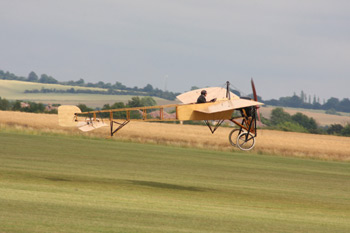
Bleriot XI EAA-1184-SE SE-AMZ
Photo Bob Franklin
The first Bleriot XI's were entered into service in both France and Italy in 1910. Some of which were used in action by Italy in North Africa and also in Mexico. In 1912 the RFC received it's first Bleriots. Nearer the beginning of World War I various English, French and Italian squadrons operated a number of variations of the aircraft, mainly in observational duties.
There were a number of famous pilots who flew the Bleriot XI, these included Jorge Chavez who flew it through the Alps in 1910 and Alfred Leblanc who broke the flight airspeed record in 1910 at 68.20 mph (109.8 km/h).
The Bleriot XI was the first aeroplane to be used in military service also the first aeroplane to perform a loop the loop.
Airworthy examples
The Shuttleworth Collection based at Old Warden own an airworthy 1909-built Bleriot XI, British civil registration G-AANG. It is the world's oldest airworthy airplane.
Another airworthy example of the Bleriot XI is based at Old Rhinebeck Aerodrome in Red Hook, New York, USA. With the US civil registration N60094 it is believed to be only three weeks newer than Bleriot XI G-AANG, and was originally built at the Bleriot factory in France, marked with the serial number 56.




